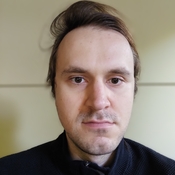Optical seminar | 04 March 2022
Online

The Standard Model (SM) is a theory of particle physics that adequately describes various physics phenomena at a wide range of energies: from a few electronvolts to several teraelectronvolts. So far, the SM predictions exhibit no apparent deviations from experimental observations at the Large Hadron Collider (LHC) or other facilities. However, the SM does not explain, for instance, neutrino oscillations, dark energy, baryon asymmetry, etc. Therefore, there must be new physics behind these phenomena, and its impact on the SM observables might be detected at the LHC. To make this happen, we need to develop an intuition of what sort of SM observables are likely to exhibit the effects of new physics and reduce the associated SM theoretical uncertainties to a level that will allow us to observe such effects.
In this talk, we mainly address the second point of the previous statement. Perturbative Quantum Chromodynamics (pQCD) is one of the major sources of the SM theoretical uncertainties. Therefore, we briefly outline the main ideas of QCD. On the examples of Higgs plus jet production and charged-current deep inelastic scattering, we demonstrate how higher-order pQCD calculations are performed and how they reveal interesting effects in these observables, such as quark mass effects. We conclude with several remarks on the future of the LHC, the SM, and pQCD.
https://link.springer.com/article/10.1007/JHEP02(2018)135
https://www.sciencedirect.com/science/article/pii/S0370269318303733?via%3Dihub
